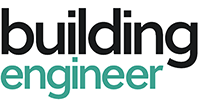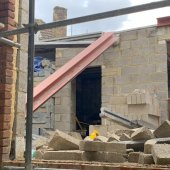Why the Golden Thread is more than a digital filing system

Dame Judith Hackitt recommended the creation of a Golden Thread of good-quality information about HRBs – but, as CABE’s Hywel Davies asks, how is that to be realised?
The Golden Thread of information was one of the most eye-catching recommendations in Dame Judith Hackitt’s independent review of building regulations and fire safety in 2018. It was to include a digital record of building work as well as fire and emergency information – essential to show that a new higher-risk building (HRB) complies with the requirements of the Building Regulations. It is also a prerequisite to demonstrating that an existing occupied HRB is safe to occupy and is being managed well.
Dame Judith envisaged that the digital record and fire and emergency file would be developed and maintained through the construction process and handed over to the building operator. This key information would continue to be maintained and then passed onto future building owners.
The Building Safety Act (BSA) establishes this. Those building and operating HRBs are required to create, develop, maintain and disclose information and to hand it on to subsequent owners and operators of the building. (This includes providing information to residents that the building they call home is the safe place they expect it to be.) The BSA covers the definition, registration and key information about HRBs, setting out what information is defined as ‘golden’ in occupation.
What is the Golden Thread?
The Golden Thread is not a set of things to do without a good purpose. Nor should the Golden Thread become a digital dustbin of random information about the building. It is intended to provide a systematic way to maintain key safety information and demonstrate good management.
The Construction Leadership Council (CLC) has published Delivering the Golden Thread: guidance for dutyholders and Accountable Persons to address the content of the Golden Thread through the full life-cycle of an HRB – from design and construction to handover and completion and then occupation. It describes what dutyholders and Accountable Persons need to create, obtain, update, maintain and share as Golden Thread information.
It is relevant to any HRB undergoing building work (whether in initial design or subsequent construction), an existing building being changed to create an HRB or an existing HRB. It also applies to any residential HRB once it is occupied. It is relevant to clients, Principal Designers and Contractors, designers and contractors, Principal Accountable Persons and Accountable Persons. While legislation only applies to HRBs, this guidance offers a number of approaches to information management that will be appropriate for non-HRB projects. And it is worth noting that many building safety reforms apply to all building work, not just work on HRBs.
The guidance has been developed by an industry working group with broad experience of developing, delivering, managing and providing information about HRBs. As the new building safety regime develops and the first batch of safety case reports are assessed, the CLC guidance will almost certainly need to evolve and develop with it. Meanwhile, for anyone with questions about the meaning of the Golden Thread, this guidance will go a long way to answering them.
See CLC’s Delivering the Golden Thread at b.link/CLC_Golden
Image credit | iStock






